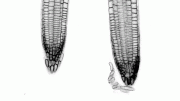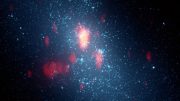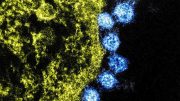
A Yale-led study discovers that planets in binary star systems, similar to “Star Wars'” Tatooine, are more likely to be climate-friendly due to their orderly alignment. This finding, which suggests a higher potential for life, comes from an analysis of 40 systems, revealing that nearly a quarter exhibit perfect alignment.
Luke Skywalker’s childhood might have been slightly less harsh if he’d grown up on a more temperate Tatooine — like the ones identified in a new, Yale-led study.
According to the study’s authors, there are more climate-friendly planets in binary star systems — in other words, those with two suns — than previously known. And, they say, it may be a sign that, at least in some ways, the universe leans in the direction of orderly alignment rather than chaotic misalignment.
For the study, the researchers looked at planets in binary star systems — systems where individual planets orbit around a host star, with a second star, located nearby, that orbits the whole system. (The fictional desert planet Tatooine, from the “Star Wars” films, is in a binary star system.)
“We show, for the first time, that there is an unexpected pile-up of systems where everything is aligned,” said Malena Rice, an assistant professor of astronomy in the Yale Faculty of Arts and Sciences and lead author of the new study, which was published on February 22 in The Astronomical Journal. “The planets orbit precisely in the same direction that the first star rotates, and the second star orbits that system on the same plane as the planets.”
Methodology and Findings
Rice’s team used a variety of sources, including the Gaia DR3 catalog of high-precision stellar astrometry, the NASA Exoplanet Archive’s Planetary Systems Composite Parameters table, and the TEPCat catalog of exoplanet spin-orbit angle measurements, to create 3D geometries of planets in binary star systems.
The researchers found that nine of the 40 systems they studied had “perfect” alignment.
“It could be an indication that planetary systems like to push toward an orderly configuration,” Rice said. “This is also good news for life forming in those systems. Stellar companions that are aligned differently can wreak havoc on planetary systems, toppling them over or flash-heating planets over time.”
Life on a Temperate Tatooine
And just how would the world look on a more temperate Tatooine?
During some seasons of the year, it would be daytime continuously, with one star lighting up one side of the planet, while the other star was lighting the other half of the planet. But that sunlight would not always be blazing hot, because one of the stars would be much farther away.
In other seasons of the year, both suns would light up the same side of the planet, with one sun appearing much larger than the other.
Reference: “The Orbital Geometries and Stellar Obliquities of Exoplanet-hosting Multistar Systems” by Malena Rice, Konstantin Gerbig and Andrew Vanderburg, 22 February 2024, The Astronomical Journal.
DOI: 10.3847/1538-3881/ad1bed
Rice gave a presentation on the study in March at the Extreme Solar Systems conference in New Zealand.
Co-authors of the study are Konstantin Gerbig, a Yale Ph.D. student in astrophysics, and Andrew Vanderburg, an assistant professor of physics at MIT.
The research was funded, in part, by the Heising-Simons Foundation and the 51 Pegasi b Fellowship program.









Funny I dont remember Tatooine every being depicted as hot.
Never saw anyone sweat.
Most beings wore thick looking robes and garments.